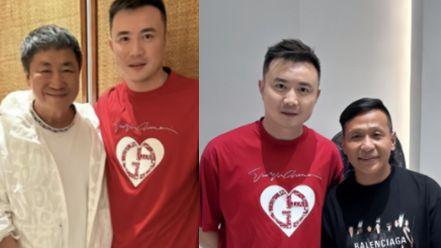扩展图神经网络:暴力堆叠模型深度并不可取( 五 )
[4] F. Monti et al., Geometric Deep Learning on Graphs and Manifolds Using Mixture Model CNNs (2017). In Proc. CVPR.
[5] P. Veli?kovi? et al., Graph Attention Networks (2018). In Proc. ICLR.
[6] J. Gilmer et al., Neural message passing for quantum chemistry (2017). In Proc. ICML.
[7] Here we assume for simplicity that the graph is sparse with the number of edges |?|=(n).
[8] W. Hamilton et al., Inductive Representation Learning on Large Graphs (2017). In Proc. NeurIPS.
[9] The number of neighbours in such graphs tends to grow exponentially with the neighbourhood expansion.
[10] Sampling with replacement means that some neighbour nodes can appear more than once, in particular if the number of neighbours is smaller than k.
[11] W.-L. Chiang et al., Cluster-GCN: An Efficient Algorithm for Training Deep and Large Graph Convolutional Networks (2019). In Proc. KDD.
[12] H. Zeng et al., GraphSAINT: Graph Sampling Based Inductive Learning Method (2020) In Proc. ICLR.
[13] Y. Rong et al. DropEdge: Towards deep graph convolutional networks on node classification (2020). In Proc. ICLR. An idea similar to DropOut where a random subset of edges is used during training.
[14] U. Alon and E. Yahav, On the bottleneck of graph neural networks and its practical implications (2020). arXiv:2006.05205. Identified the over-squashing phenomenon in graph neural networks, which is similar to one observed in sequential recurrent models.
[15] Frasca et al., SIGN: Scalable Inception Graph Neural Networks (2020). ICML workshop on Graph Representation Learning and Beyond.
[16] O. Shchur et al. Pitfalls of graph neural network evaluation (2018). Workshop on Relational Representation Learning. Shows that simple GNN models perform on par with more complex ones.
[17] F. Wu et al., Simplifying graph neural networks (2019). In Proc. ICML.
[18] While we stress that SIGN does not need sampling for computational efficiency, there are other reasons why graph subsampling is useful. J. Klicpera et al. Diffusion improves graph learning (2020). Proc. NeurIPS show that sampled diffusion matrices improve performance of graph neural networks. We observed the same phenomenon in early SIGN experiments.
[19] G. Bouritsas et al. Improving graph neural network expressivity via subgraph isomorphism counting (2020). arXiv:2006.09252. Shows how provably powerful GNNs can be obtained by structural node encoding.
[20] F. Monti, K. Otness, M. M. Bronstein, MotifNet: a motif-based graph convolutional network for directed graphs (2018). arXiv:1802.01572. Uses motif-based diffusion operators.
[21] C. Szegedi et al., Going deeper with convolution (2015). Proc. CVPR proposed the inception module in the already classical Google LeNet architecture. To be fair, we were not the first to think of graph inception modules. Our collaborator Anees Kazi from TU Munich, who was a visiting student at Imperial College last year, introduced them first.
[22] Note that reaching higher-order neighbours is normally achieved by depth-wise stacking graph convolutional layers operating with direct neighbours; in our architecture this is directly achieved in the first layer by powers of graph operators.
推荐阅读
- Kensington发布StudioDock 将iPad Pro扩展坞与无线充电器相结合
- 腾讯与长三角G60科创走廊“牵手”:扩展科创“朋友圈”推进城市数字化转型
- 影驰发布经典版RTX 3090/3080:暴力涡轮风扇成了新潮
- 欧版Galaxy S21系列将不支持 MicroSD 卡扩展
- AMD专利泄密:RDNA3显卡暴力堆核
- 戴尔WD19TB扩展坞 轻薄办公好帮手
- 外接内置一样快!希捷Xbox Series X存储扩展卡评测
- OPPO正在研发一款屏幕可垂直扩展的智能手机
- 海外运营商暴力屏蔽小米双卡功能,遭到用户起诉
- WD西数推出雷电3 SSD扩展坞,2TB固态87W PD快充
















![[衢州集聚区]【一线战“疫”】一位80后业委会主任的防疫故事](https://imgcdn.toutiaoyule.com/20200404/20200404084152089853a_t.jpeg)


